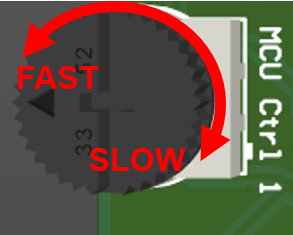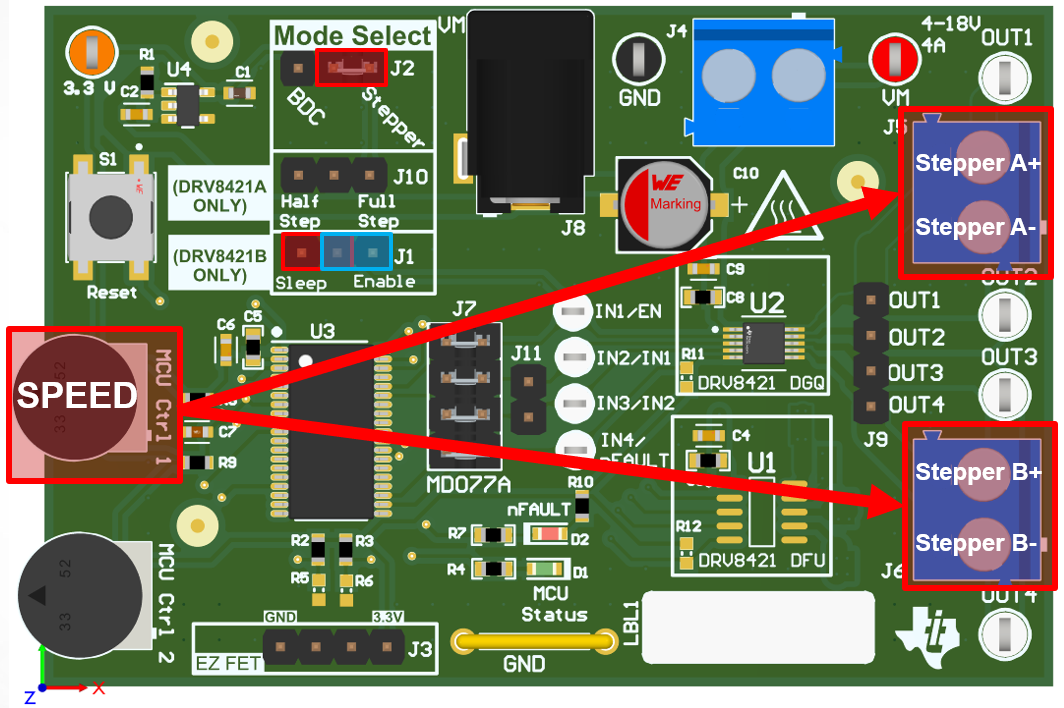SLOU571 June 2024
- 1
- Description
- Get Started
- Features
- Applications
- 6
- 1Evaluation Module Overview
- 2Hardware
- 3Hardware Design Files
- 4Additional Information
2.1.6.4 DRV8421B: Stepper Motor Control
The MSP430 produces PWM signals for the IN1 and IN2 pins with frequencies proportional to the voltage from the MCU Ctrl 1 potentiometer.
MCU Ctrl 1 controls the speed of the stepper motor. Begin with potentiometer fully clockwise and slowly rotate counter-clockwise to increase speed.
 Figure 2-12 Speed Control
Direction
Figure 2-12 Speed Control
DirectionWhen operating in Stepper Mode (J2) and the device is Enabled (J1), the speed of the stepper motor is controlled by MCU Ctrl 1 potentiometer. The DRV8421B is configured in a full-step sequence by default and the Step Select (J10) jumper must not be populated.
 Figure 2-13 EVM Controls for Stepper Motor
Operation with DRV8421B
Figure 2-13 EVM Controls for Stepper Motor
Operation with DRV8421B